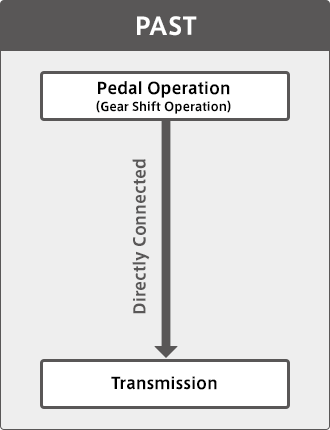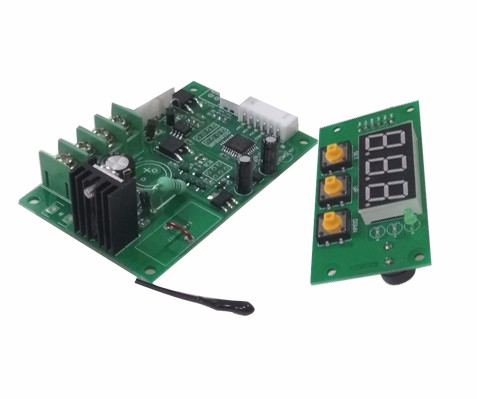Brief overview of a data acquisition system
5 min read
Imagine that you are a race engineer on a renowned motorsports team. You are responsible for the development of the vehicle and for ensuring that the driver can squeeze the every last bit of horsepower out of the engine. If your vehicle does not stick out to the expected performance, then there could be a problem in your implementation. Here is where a data acquisition system can be exceptionally important. Accuracy is the key to success on track and each data point measured could determine your chances of winning.
What is a data acquisition system?
When we need to gather information on our vehicle in order to improve its performance, we can count on our instruments and gauges. Our driver would have to look at really many instruments each time anything worthy of attention happens, inevitably having to take their eyes off the track. They would have to remember the readings on the gauges indicated to share it with the engineers later, all while being distracted from achieving maximum potential on the track. It sounds impossible to human nature, right? Data Acquisition, as the name implies, is the recording of the information measured during the time the vehicle is running, for later in-depth analysis.
Why do we need a data acquisition system?
- To analyze vehicle performance
- To analyze driver performance
- To help with vehicle development
- To monitor reliability and safety
- To determine vehicle parameters
- To keep maintenance logs
Sensor requirements and calibration
Sensors are responsible for conversion of various mechanical parameters into measurable electrical quantities. The sensor selection for every team changes with their design goals. A few common sensors implemented by most teams include three axis accelerometers and sensors to detect wheel speed, shock travel, steering angle, manifold air pressure, coolant temperature, throttle position and gear position.
Below are a list of the sensors mentioned above and their functionalities.
Accelerometer:
A three axis capacitive micro machined accelerometer can be used to monitor the vehicle accelerations. It features signal conditioning, a single-pole low pass filter, temperature compensation and selectable sensitivity (1.5g/2g/4g/6g). Its capacitive approach offers several benefits when compared to the piezoresistive sensors used in many other accelerometers, notably a wider temperature range and response to DC as well as dynamic vibrations. The sensor outputs voltages proportional to the experienced g-force.
Wheel speed sensor:
Wheel speed can be measured using an NPN-type inductive proximity sensor. As a tooth on the wheel passes by the sensor, a pulse is generated in a recurring manner. The pulse train will increase in frequency as the vehicle speeds up and decrease as the vehicle slows down. Low cost inductive proximity sensors have a maximum switching frequency of approximately 600Hz.

Shock travel sensor:
The suspension system plays a key role in the vehicle dynamics of a race car. Knowledge of the linear displacement of the shocks for a particular damping setting is critical in evaluating the damping performance in various loading scenarios. Shock travel sensors used to measure these linear displacements are available in two types: wire wound and conductive plastic. Conductive Plastic (CP) displacement sensors are free from hysteresis and hence recommended.
Steering angle sensors:
A rotary potentiometer housed inside the steering rack housing and attached to the steering column can be used to measure the steering angle. A non-contact based sensor (LVDT, capacitive, etc.) could also be incorporated to prevent wear-and-tear over time.
Gear position sensor:
For the purpose of indicating gear position, a small gear can be meshed with the gear drum in the engine and a high quality potentiometer shaft can be rotated accordingly by the gear drum using this arrangement. Distinct voltage levels can be obtained for each position.


Fuel level sensor:
A typical fuel gauge consisting of a float that is mounted on the end of a pivot arm can be used as a fuel level sensor. The resistance of the fuel gauge changes as the float moves up and down with the fuel level. Errors introduced in the readings due to fuel slosh can be reduced by implementing a moving average filter with a window size of 15.
Coolant temperature sensor:
A coolant temperature sensor (CTS) can be used to measure the temperature of the coolant in the cooling system, giving an indication of how much heat the engine is giving off. The sensors work with the vehicle’s ECU, continually monitoring the coolant temperature to make sure the engine is running at the optimum temperature.

Other accessories:
Cooling control board:
Every engine is designed to work at maximum efficiency within a certain temperature range. The devices which can be controlled to maintain the engine in the specified temperature range are the coolant pump and the radiator fan.
Power card:
A noise free, light weight power supply is an essential requirement of a portable DAQ System. One should be able to design a Power Card based on low cost linear voltage regulators and equipped with features such as surge voltage protection, overcurrent protection (using Polymeric Positive Temperature Coefficient fuses), reverse voltage and over voltage protection.
–
The above information is a basic overview of the sensors and system involved in data acquisition. The data acquisition system should be considered as the doctor of the vehicle, who analyzes the vehicle’s system metrics and provides feedback so that the vehicle can perform at its full potential.
References:
- https://en.wikipedia.org/wiki/Data_logger
- https://racingcardynamics.com/data-acquisition-fundamentals/
- https://medium.com/daqifi-data-acquisition/data-acquisition-for-race-cars-dc14ff23c7c5
The following blog post has been written by Arounaachalesvarar B, an autoholic student from the SASTRA deemed University pursuing BTech EEE with specialization in electric vehicles. Aroun is interested in content creation and blog writing on automotive industry.
This post has been edited for grammar and other inconsistencies. To learn how you can contribute to content creation at Formula Bharat, visit www.formulabharat.com/careers.